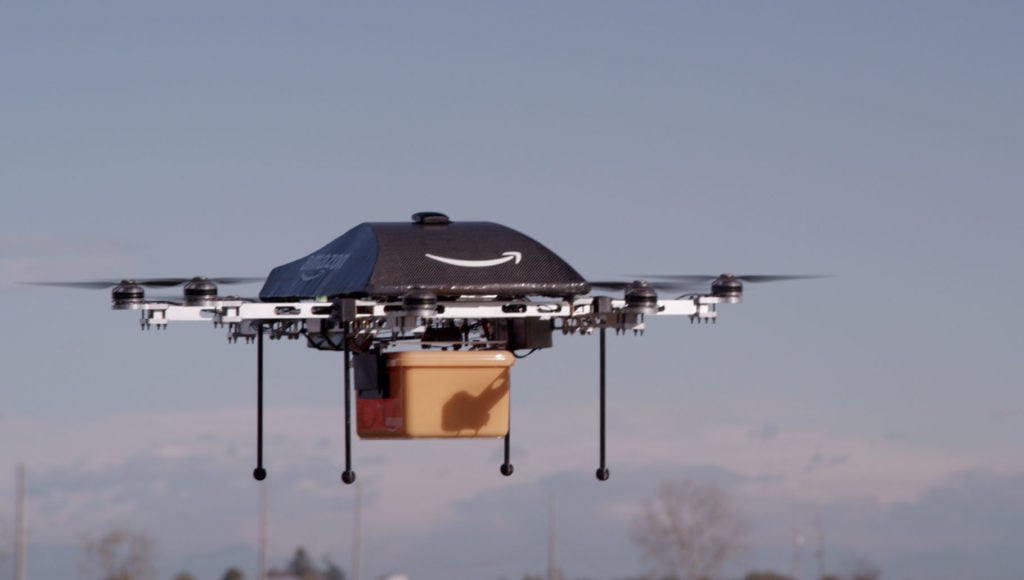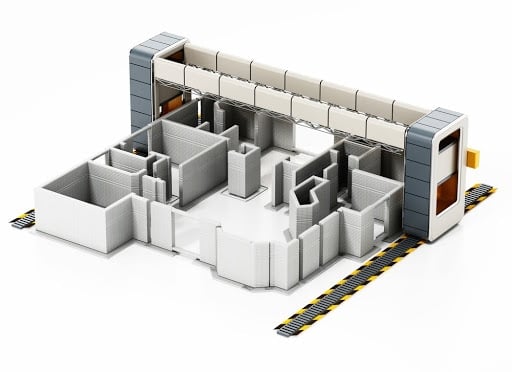“Prime Air deliveries will be as common as seeing a mail truck.” -Jeff Bezos, CEO of Amazon.com
Amazon Prime Air is Here
In case you thought it was a pipe dream (and you really never should with this company), Amazon is now delivering packages with fully autonomous unmanned drones as of December 7, 2016.
And you better believe they stamped that ubiquitous smile logo on the top of that aircraft.
The first trial is hosted in Cambridge, United Kingdom delivering to two customers from specialized fulfillment centers (hangars?).
Multiple drone models are being tested. All versions have collision detection systems and can carry packages of up to five pounds. Some are capable of making a 15 mile round trip.
The goal is to deliver in 30 minutes or less (Pizza chains would do well to pay close attention).
Currently, the drones fly to a maximum height of 400 feet and only during daylight hours with no inclement weather.
As more data is collected and safety systems are enhanced, the drones will brave riskier elements and expand their service area.
Amazon is working with regulatory agencies in America, Austria, the United Kingdom, and Israel to seek operating approvals. No firm timeline is established for widespread adoption of the program, but CEO Jeff Bezos cited these agency approvals as the primary roadblock.
In a 2015 interview with The Telegraph, Bezos said, “Prime Air deliveries will be as common as seeing a mail truck.”
How About a Mail Blimp?
It is now clear, thanks to a tweet by CB Insights analyst Zoe Leavitt, that Amazon also wants to elevate their warehouses to a new level: 45,000 feet high to be exact.
The patent, awarded to Amazon in April 2016, describes an “airborne fulfillment center” (AFC) that houses products available for purchase.
These AFCs fly over an area experiencing peak demand. After picking an order, a drone floats from the AFC to the delivery pad next to a customer’s home.
After dropping the package, it goes to a grounded shuttle that will eventually restock the floating warehouses with more drones, products, fuel, and possibly personnel.
If we don’t already live in the age of the Jetsons, we are pretty darn close!
The current drone trials launch from traditional land-based distribution centers. However, the prototype drones are relatively short-range which limits their service area.
The benefits of a floating warehouse fleet include faster delivery, reduced shipping costs, and flexibility to adjust to peak demand.
Amazon has not officially commented about the floating airships, and there are even higher regulatory hoops to expect. Therefore, these blimps will not launch anytime soon.
The e-commerce giant continues to grow as a result of their commitment to innovation and bold risk-taking. Amazon Prime, it’s $99 per year membership club which offers a host of perks including free two-day shipping, is one of the company’s biggest successes.
According to Reuters, the company will add 100,000 additional jobs across multiple disciplines during the next 18 months.











